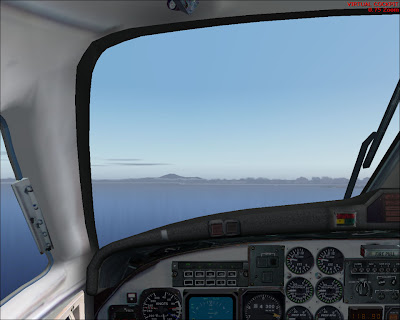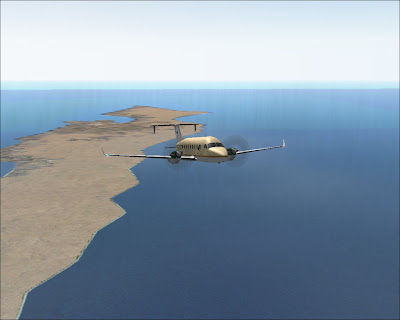DAY 4, LEG 18 - Tenerife to Lanzarote
This leg took me from Tenerife to Lanzarote, the most northern of the Canary Islands where I would stop before heading into Morocco for the last leg of my African journey. I decided to do something a little different for this leg and perform a touch and go at each of the 9 airports on the Canary Islands.
The leg began at Tenerife South and heading to La Gomera, El Hierro, La Palma, Tenerife North, Las Palmas, El Berriel, Fuerteventura, then finally, Lanzarote.
Waiting for an Air Berlin aircraft from Zurich to clear runway 26 at Tenerife South. There is a 25 knot headwind on this runway now and the Beech's rotation speed is around 100kts so it's likely to be a quick take off roll.
Positioning for final approach to La Gomera.
Climbing out of La Gomera following the first touch and go.
Final approach at El Hierro.
Approaching the island of La Palma
Positioning on final for La Palma. The tower is reporting the wind as 17 knots gusting up to 26! The direction of the wind was from over the island so this is going to be a bumpy one!
Climbing away from the airport over the port of Santa Cruz.
Leaving the island of La Palma behind us.
Mount Teide on Tenerife already visible 77 miles ahead of us whilst climbing out of La Palma.
Routing past La Gomera again and just visible is the west coast of Tenerife.
Descending into Tenerife North.
Just completed a touch and go at Tenerife North.
Final approach to Las Palmas with a Pintadera ATR 72 just lifted off from runway 21R heading for La Palma and a Thomas Cook B757 rolling for departure to East Midlands, UK.
Final approach to El Berriel on Gran Canaria. El Berriel is a general aviation airport serving the island and is located a few miles south of the main international airport.
Descent into Fuerteventura with the southern tip of the island in view behind us.
Turning base for runway 19.
Final approach to Fuerteventura. The name translated from Spanish means "strong wind" which is no surprise given I am trying to land in a 15kt crosswind!
Approach to my final destination of the day, Arrecife airport on the island of Lanzarote.
Parked at Lanzarote.
GCTS - GCRR stats
Take off time: 1322
Landing time: 1522
Flight time: 02:00
Fuel used: 869kgs / 1912lbs






















































